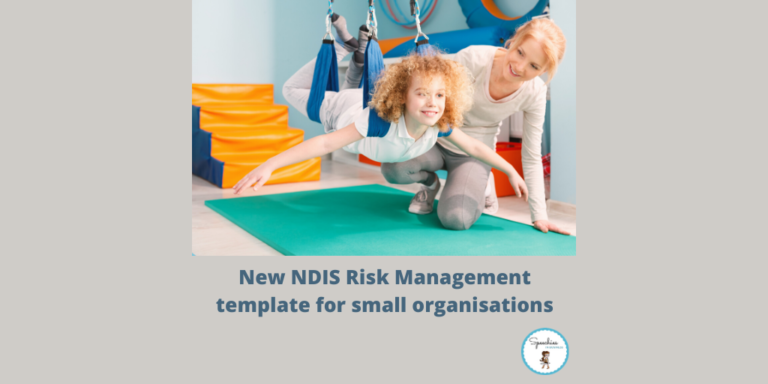To infinity and beyond: how I learned to be optimistic about the NDIS
When I left full-time lawyering to become a speech pathologist, I promised myself that I would be more constructive, and less – well – judgmental. A good test of this resolve was watching the implementation of the National Disability Insurance Scheme (NDIS) in real time.
Yes, the NDIS has its problems
Starting in earnest with the enactment of the National Disability Insurance Scheme Act 2013 (Cth), the $22 billion roll-out of the National Disability Insurance Scheme marked a radical shift towards self-directed care for people with permanent and significant disabilities. It aims to enhance independence, choice and control by giving people with disabilities more choice about the type of help they receive, when they receive it, and who provides it.
But – truth told – the NDIS has had more than its fair share of problems.
Many criticisms are valid
Change is hard!
The rapid (just seven year) movement away from block funding to a national, personalised service model was always going to come with challenges; and the NDIS has not had a shortage of critics. Stakeholders, including service users, advocates, service providers, policymakers, researchers, lawyers, journalists and others, have at different times lambasted:
- the scheme’s governance and regulatory architecture (e.g. Olney & Dickinson, 2019);
- the inaccessibility and overall complexity of the scheme;
- the NDIS portal and other IT systems, which frustrated participants and providers alike, and, in its first couple of years, sent some small providers to the wall (although the systems seem to be improving);
- the difficulties users and providers face navigating the system;
- poor communication between the National Disability Insurance Agency (NDIA), participants and providers, including difficulties getting reliable and accurate information (e.g. Warr et al., 2017);
- the absence of ready markets for services in many areas, especially in remote places, leading to the under-use of funded (needed) services and supports;
- the inefficiencies of the annual review process, including the need for extensive preparation and expert evidence, especially for participants looking to self-manage their funds (e.g. Olney & Dickinson, 2019);
- the mismatch for some NDIS participants’ ad hoc needs caused by fluctuating health and the way supports are funded in advance;
- serious inequities, e.g.:
- the frequent observation that assertive people with professional backgrounds or better advocacy skills (or people with access to others with good advocacy skills) tend to do better than those who are not as good at advocating for themselves (e.g. Warr et al., 2017); and
- the fact that the system can be hard to access and navigate without access to the Internet;
- worries by some NDIS participants that unspent funds at the end of the year will result in fewer funds being allocated the next year (and the rush to spend funds that ensues to reduce this risk);
- the limited evidence-base for some of the NDIA’s practices;
- the training and knowledge deficiencies of some of its staff, including some staff who seem to lack an in-depth understanding of disabilities (e.g. Warr et al., 2017);
- the administrative burden for NDIS participants, including using the portal to view plans, keep track of budgets, request payments and manage services (Warr et al., 2017);
- the red tape, and high administration and compliance costs for NDIS providers (e.g. Warr et al., 2017), which has resulted in many smaller providers de-registering from the NDIS;
- the perception among many providers of low engagement with professionals involved in the sector, including limited understanding of the complexities involved in the provision of front line services, unrealistic pricing expectations (e.g. NDS, 2016, 2018);
- the NDIA’s interpretation of tests for eligibility for the scheme or the meaning of “reasonable and necessary” supports (e.g. Morton, 2018; O’Donovan, 2018; Victorian Legal Aid, 2018; Australian Legal Information Institute, 2019);
- the NDIS’s interface with other “mainstream” services, and the “buck-passing” that happens, e.g. between the NDIA and state health authorities;
- competing priorities, jurisdictional ambiguities, quasi-market shaping;
- the fact that individuals and families rarely live their lives in the way in which government services are organised (e.g. Dickinson & Carey, 2017);
- tensions between themes of giving participants choice and control in planning their care, and the reality of discretionary decision-making on the part of the scheme’s care planners about what is “reasonable and necessary support” in a given case (Olney & Dickinson, 2019);
- service providers bearing the brunt of participants’ frustrations with the scheme (Olney & Dickinson, 2019);
- serious forecasting errors:
- estimating that there would be about 410,000 scheme participants, when the number will be closer to 500,000 by 2024-25;
- thinking that people with Autism Spectrum Disorders would make up at most 18% of scheme participants, when the actual number of the past three years has been closer to 28-31% (e.g. Morton, 2020);
- perceived and potential conflicts of interest, e.g. when plan managers are also providers;
- fraud risks and sharp practices, which have arguably been overlooked or discounted until very recently; and
- skill shortages, especially with highly-skilled, technical skill sets needed to provide specialised services to people with disabilities.
These are just some of the many criticisms of the scheme. On top of these issues, many continue to question the scheme’s long-term financial viability. Overall, many participants, providers and other stakeholders agree that there remains a significant gap between expectations (e.g. about participant choice and control) and the realities of navigating the NDIS.
So should we give up?
Of course not!
The NDIS is publicly funded, so we should expect it to listen to criticism and be accountable to people with disabilities, service providers and other stakeholders – many of whom have very valid criticisms and complaints. But we also have to support the NDIS and to work with each other if we want it to survive.
In scrutinising the NDIS’s performance, it’s worth remembering that disability services in Australia before the NDIS were underfunded, inflexible, fragmented, and, too often, focused on the system, rather than individuals with disabilities (e.g. Productivity Commission, 2011). Funding was complex, inefficient, opaque, with gaps and overlaps in State, Territory and Commonwealth responsibilities (Purcal et al., 2014). Far too many Australians with disabilities had a poor quality of life, including social exclusion, elevated risks of violence, low incomes and poor access to jobs (e.g. Kmjacki et al., 2016; OECD, 2009; Mithen et al., 2015).
Many Australians with disabilities are faring better under the NDIS than under previous arrangements. But that is, of course, a low bar, and not everyone with a disability is enjoying more choice, control, better services, or a higher quality of life. Many challenges remain, including:
- closing the gap between the lofty objectives of the scheme and the cold hard reality (e.g. Productivity Commission, 2017; Warr et al., 2017);
- improving equity of access to the scheme and its outcomes;
- maintaining the long-term financial viability of the scheme (and its bipartisan political support);
- simplifying the administrative burdens of the scheme for participants and providers;
- improve communication between stakeholders;
- increasing training support to NDIS staff, its agents and providers;
- increasing choice and control by supporting the markets for services (e.g. through seed funding); and
- improving the quality, evidence-base, value-for-money and integrity of services provided, including through the NDIS Quality and Safeguards Commission, and its efforts.
The NDIA has always acknowledged that the implementation of the scheme would be a significant challenge and that problems would need to be solved and addressed through continuous improvement processes. To use a well-known simile, it’s like we’re falling from 37,000 feet and trying to build a plane before we land.
The scheme’s sometimes rocky implementation is testing the patience of government, service providers, and, most importantly, people with disabilities and their networks. More challenges – including many listed above – remain. But they will be easier to overcome if we work with each other constructively, giving most weight to the concerns, goals and lived experiences of people with disabilities.
Yes, I’m still a clear-eyed realist. No, I have no mellowed in my middle-age. But I’ve learned to be optimistic and to have high expectations about what the NDIS is and can achieve for participants and for Australian society as a whole.
When so much is at stake, what choice do we have but to support the NDIS and to work hard to improve it?
Principal source: Olney, S., and Dickinson, H. (2019). Australia’s New National Disability Insurance Scheme: Implications for Policy and Practice. Policy Design and Practice, 2(3), 275-290.








